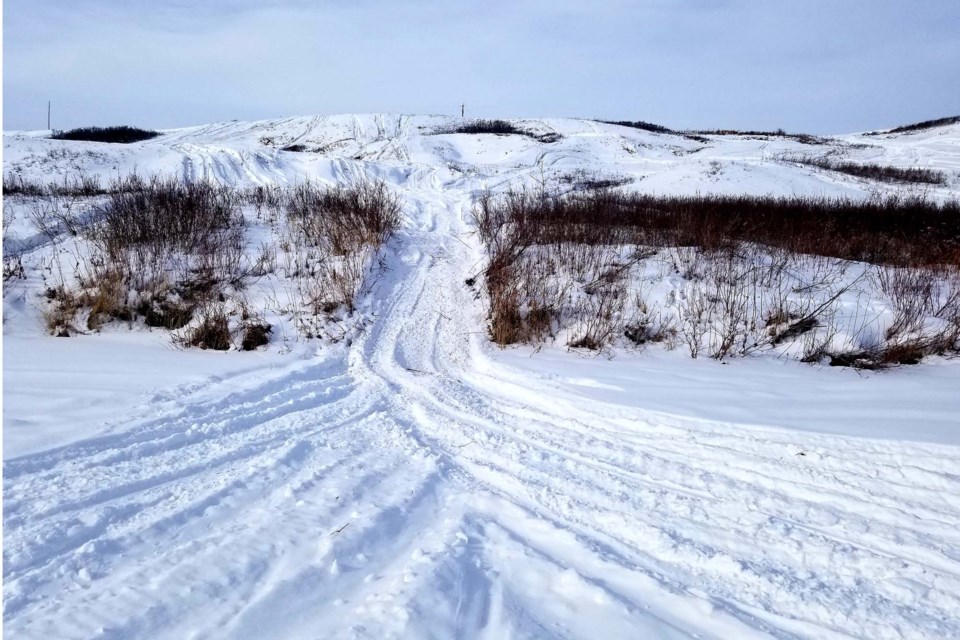Edmonton-area naturalists are calling on snowmobile enthusiasts to stay out of a rare chunk of the Alberta Badlands near Gibbons and the Sturgeon River.
Edmonton Native Plant Society member Kathleen Mpulubusi approached the Gazette earlier this month with concerns about the effects of all-terrain vehicles on what’s informally called the Gibbons Badlands or Cactus Prairie in between Hwy. 28 and the Sturgeon River in Gibbons.
The Sturgeon River has cut deep into the bedrock in this area, exposing sediments laid down 60 to 130 million years ago, explained fellow society member Patsy Cotterill. This has created a unique badlands zone along about 750 m of the Sturgeon’s west bank here that’s very similar to what you’d encounter near Drumheller.
“It’s a beautiful spot for (nature) interpretation,” Cotterill said.
Some 155 plant species are here, including the brittle prickly pear cactus and many native grasses, as well as many butterflies, birds and other animals, Cotterill said. It has features of both forest and riparian zone habitats, and has been mostly undisturbed by farming, making it a sort of living museum of the pre-settlement prairie.
Mpulubusi said the society and Gibbons-area naturalists first spoke to Gibbons town council about this area in 2012, as they were concerned about snowmobiles and off-road vehicles digging deep ruts through it. The town put up fences and warning signs around the area (but not along the riverbank) around 2014.
This winter, though, residents have noticed snowmobilers have driven into this area by cutting the fences or riding up from the frozen Sturgeon, leaving deep ruts in the snow, Mpulubusi said. This has happened before, but it’s a bigger issue this year as there isn’t as much snowpack to protect the plants.
“They’ve got it down to the bare earth,” she said, and that puts the plants here at risk.
Off-road vehicles can kill the native plants needed to prevent erosion of these badlands slopes and give invasive weeds a chance to invade, Cotterill said. Many of the ruts left by years of off-roading prior to the fences going in are just now starting to recover.
“It’s simply not acceptable to tear up that very special landscape,” she said.
Signs, fences ignored
Gibbons public works supervisor Eric Lowe said crews have fixed the fence, but could not fence along the riverbank, as the river itself isn’t town property. Snowmobiles aren’t allowed in this or any other part of Gibbons, and the town has posted many signs to that effect around this region – signs people appear to be ignoring. It’s also very tough for RCMP and bylaw officials to catch violators.
“We try our best to protect it but you can only do so much,” Lowe said.
Cotterill said she had talked with Gibbons chief administrative officer Farrell O’Malley about creating a long-term plan for trails in this area, adding that the plant group holds regular tours to raise awareness of it. Still, she hoped to see more signage and enforcement here to protect the region.
Mpulubusi said the plant group would inspect the site for damage once the snow melted. She urged area off-roaders to stay out of this fragile ecosystem and treat it with respect.
“Just because it’s covered in snow doesn’t mean you’re not doing damage.”




